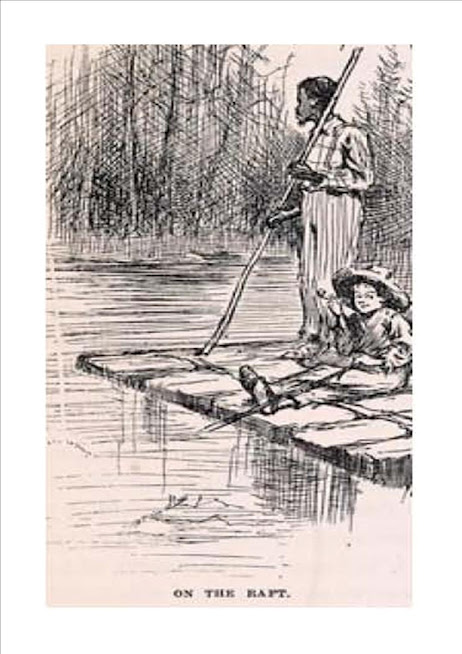 Original illustration by E. W. Kemble from the first edition of Adventures of Huckleberry Finn (1884)
Original illustration by E. W. Kemble from the first edition of Adventures of Huckleberry Finn (1884)
The topic of nature has been widely depicted in literature, but depending on the historical period or the literary movement, this has appeared in one shape or another. From the arrival of the first English settlers in the New World to the consolidation of the original New England as a nation almost four centuries have passed during which literature has narrated the main events that took place in those lands. This article analyzes the role of nature in relation to children in two major works of American literature in the XIX century: The Scarlet Letter (1850) by Nathaniel Hawthorne and Adventures of Huckleberry Finn (1884) by Mark Twain in an attempt to study how the topic of nature has been dealt with especially in its connection with societies, and in particular, children.
Resumen
El tema de la naturaleza ha sido muy representado en literatura y según el momento histórico o el movimiento literario en el que nos encontremos observamos un tratamiento de la misma u otro. Desde la llegada de los primeros colonos ingleses al Nuevo Mundo hasta la consolidación de la inicial Nueva Inglaterra como nación han pasado cuatro siglos en los que la literatura ha narrado los acontecimientos más relevantes. Este artículo analiza el papel de la naturaleza en relación a la figura de los niños en dos obras maestras de la literatura norteamericana del siglo XIX: La Letra Escarlata (1850) de Nathaniel Hawthorne y Aventuras de Huckleberry Finn (1884) de Mark Twain con el fin de ver cómo se ha tratado el tema de la naturaleza asociado a las sociedades y en concreto a los niños.


